Considerations for Building on a Steep Slope
A favorite client of ours once said,
If you’re going to live in the mountains, you want to have a view!
His sentiment is shared by many people that relocate to the Blue Ridge Mountains of Western North Carolina. And if a home with a view is what you’re after, then you have to drive up into the mountains.
Sloping land usually offers the best views because the land slopes away from the house, opening up the views below or off in the distance. In the real estate world, we often refer to this as “view control.”
Building on steep land in the Asheville, North Carolina area requires certain expertise and a higher level of due diligence compared to building on flat land. Land parcels that are designated as Steep Slope in the Buncombe County Zoning Overlay are subject to additional requirements that must be met in order to get a building permit.
In this post, we’ll look at what those requirements are, what costs might be incurred to build on a steep slope, and even discuss if it’s worth the effort.
What is a Steep Slope?
According to the Buncombe County Planning Department, the Steep Slope Overlay…
…is intended to limit the intensity of development in steep areas, preserve viewsheds, and protect natural resources on land higher than 2,500 feet above sea level with a natural slope of 35% or more.
The key points are here the elevation and natural slope figures. It’s very easy to get to an elevation of 2,500 feet or more in our area, and a 35% slope is also very common. After all, we live in the mountains; many areas of Buncombe County have steep topography! Remember, the highest peak east of the Mississippi River (Mount Mitchell) lies just outside of Buncombe County at 6,683 feet elevation!
Why Build on Steep Slope?
It’s actually quite common for homes to be built on a steep slope in Western North Carolina. We have a lot of sloping land and many lots that lie above 2500 feet elevation. Many of these areas are very wooded and have a natural feel, which is quite different than the urban infill lots that are typically found within the city of Asheville. Many buyers prefer to live in these beautiful, mountainous areas.
The main reason people decide to build on steep slope lots is for the view! You can’t get a really dramatic mountain view without first driving up into the mountains! By building a house on a sloping lot, the homeowner gains “control” of the trees below the house. This means the trees can be trimmed or removed to open up the view, and the view can be maintained in the future.
What Building Restrictions are there on a Steep Slope?
Buncombe County imposes several restrictions for steep slope parcels. These restrictions include the amount of land that can be disturbed, screening requirements, and the requirement to hire a geotechnical engineer.
Disturbance Limits
When considering buying a lot that has a steep slope, it’s important to consider the size of the house you want to build. If the house will have a large footprint, you may need to find a large lot. This is because there are limitations on the percentage of the lot that can be disturbed, as well as the amount of land that can have “impervious” improvements. Such improvements would include paved driveways, foundations, etc. This rule is to help prevent problems with runoff and erosion.
Screening Requirements
The next regulation that lot buyers and builders need to consider is the county’s screening requirements. If the land at the downhill side of the home drops more than 25 feet in elevation within 100 horizontal feet of the home, a screening plan will be required. Essentially, native plantings must be used to help screen the downhill side from view.
The county uses a credit system, and credits are based on the diameter and height of existing trees, plus new credits for new trees. The number of credits is based on the “planar surface” of the new home, which is the “combined vertical exterior surfaces within a single face of the structure.”
This gets a little complicated, but suffice it to say that when you have an exposed slope beneath a newly built home, it looks unsightly from a distance. But when properly screened, the home will blend into the mountain environment, while still affording the homeowner a mountain view.
Geotech Requirements
The most important part of due diligence that a buyer can do while evaluating steep slope land listing is to consult with a geotechnical engineer. On land with 35% or higher slope, or in a high/moderate hazard area as shown on the Buncombe County Slope Stability Index map (available on the Buncombe County GIS website), a geotech report is required before any disturbance can take place on the lot.
After the structure is built, a second report must be completed by the engineer, certifying that the original recommendations were adhered to during construction.
Because the geotechnical report is required in order to build, we usually recommend that clients obtain this report during the Due Diligence period of the purchase contract. That way, if there are concerns with the soil or the recommendations in the report are going to be too expensive to implement, the buyer can back out and only be out the cost of the report. Those reports are expensive, but not nearly as expensive as the added building costs that could result from the engineer’s recommendations.
How do I Know if my Lot is Subject to Steep Slope Regulations?
The first place to check to see if a lot is subject to Steep Slope Regulations is the Buncombe County GIS map or the MapWNC Slope Tool.
The county GIS website will show if your lot lies in the “Steep Slope Zoning Overlay,” but only if the lot is in the county and not within a township or city such as Asheville, Black Mountain, Weaverville, etc. So, if the lot is subject to oversight by one of these towns, it’s imperative to check with the local municipality to understand the specific requirements.
For example, the Town of Black Mountain’s Zoning Ordinance includes an Erosion Prevention and Slope Protection Ordinance. The ordinance places limitations on density and requires a geotechnical engineer for homes built on land in excess of 36 percent natural slope. To calculate the slope, we would again refer to the MapWNC Slope Tool.
City of Asheville
The City of Asheville also imposes regulations on steep slope properties. The stated purpose of Asheville’s “Steep Slope and Ridgetop Development Ordinance” is as follows:
Asheville is in a unique geographic location where mountains, valleys, and hills constitute significant natural topographic features. The mountains and hillsides of Asheville are visible from many places in the city, adding to the quality of life for residents, and improving tourism opportunities for visitors. These areas are sensitive to development activities and measures must be taken to maintain slope stability and to control erosion and stormwater. In order to ensure the preservation of this character and the appropriate use of the hillsides, the regulations of this section are established to recognize that development of land in steep or mountainous areas involves special considerations and unique development standards.
Compared to other areas in the county, Asheville’s definitions of a steep slope are more strict, designating steep slopes as areas above 2220 feet in elevation and having an existing grade of 15 percent or more.
What are the Costs & Considerations when Building on a Steep Slope or Lot?
Driveways
Building homes on a steep slope or lot will often require sloping driveways to access the house from the road. There are exceptions, such as when the lot can be accessed by a relatively flat pull-off at the top of the lot. But in many cases, the driveway will need to traverse up the lot, down the lot, or across the lot to access the house. And some driveways will require switchbacks.
Retaining Walls
Engineers and graders in Asheville are typically experts in designing and installing retaining walls. Even moderately sloping lots may still need a short retaining wall to hold back a slope, or to hold up a driveway. On a steep slope, retaining walls can be impressive, and the costs can get expensive. Sometimes, these costs are hard to recoup when selling a home. But, if building on a slope results in tangible selling features (a view!), then the added construction costs can pay off.
Foundations
Building on steep land almost always involves building on a basement. Homes for sale in the mountains often feature “daylight” basements or “walkout” basements. Improvements in waterproofing technologies mean basements in newer homes are usually very dry, making basement square footage just as desirable as above-grade square footage. But very steep lots might even require a sub-basement or crawl space below the basement. So it’s important to evaluate the building site with a grader or contractor to get a better idea of what will be needed for the home’s foundation.
Is Building on a Steep Slope or Lot Worth It?
This answer will vary depending on the buyer. If you’re comfortable with the added requirements, such as consulting with a geotechnical engineer, and you really want a jaw-dropping view, the answer is yes. But even so, we highly recommend working with a builder that has experience building on a slope and is familiar with working with engineering plans.
Some of the most beautiful homes in Western North Carolina are built on a steep slope. It’s not unusual in this area, and it’s a good thing that regulations are in place to protect the natural beauty of the Asheville area and to ensure that homes in the mountains are built to be safe.
For some, the prospect of building a home on slope can be overwhelming. Keep in mind there are many completed homes for sale in Asheville that are built on slope. Buying a finished home removes the potential for significant budget overruns. The same can be said for homes for sale in Black Mountain or any other area with steep slope requirements.
If you’re considering building a home on sloping mountain land, we’ve navigated the process many times, and we can recommend local builders and geotechnical engineers. Let us help you find your perfect lot for your Asheville dream home!


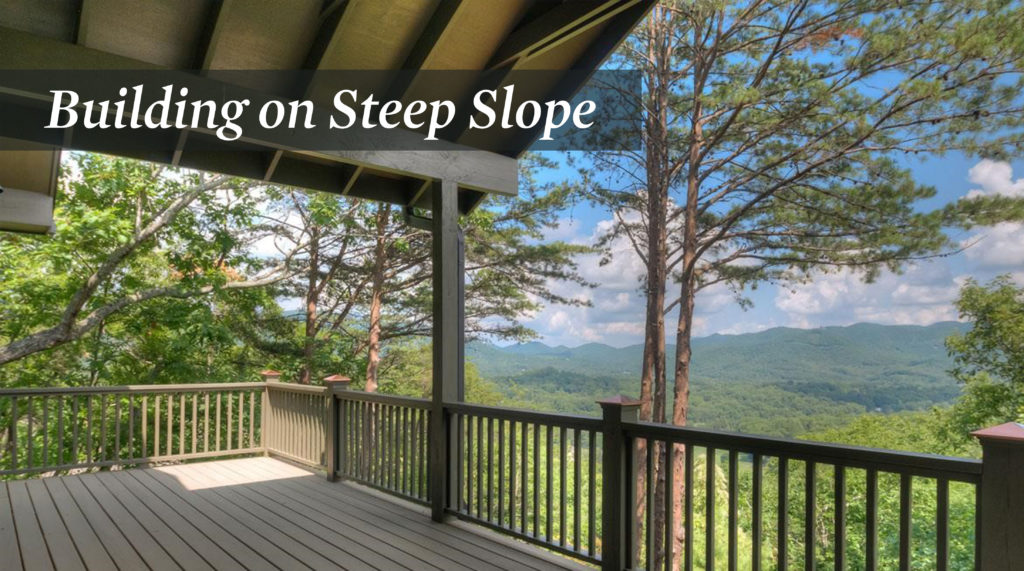
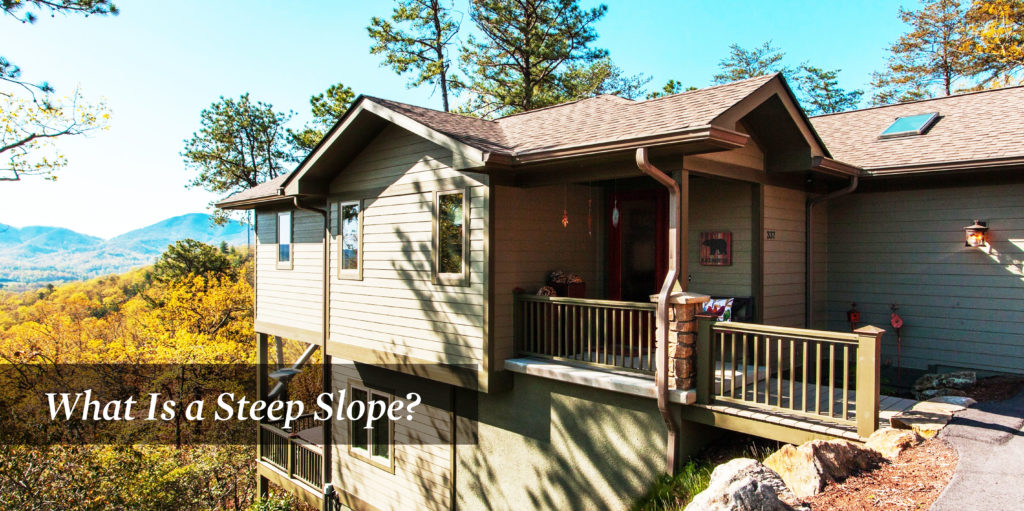
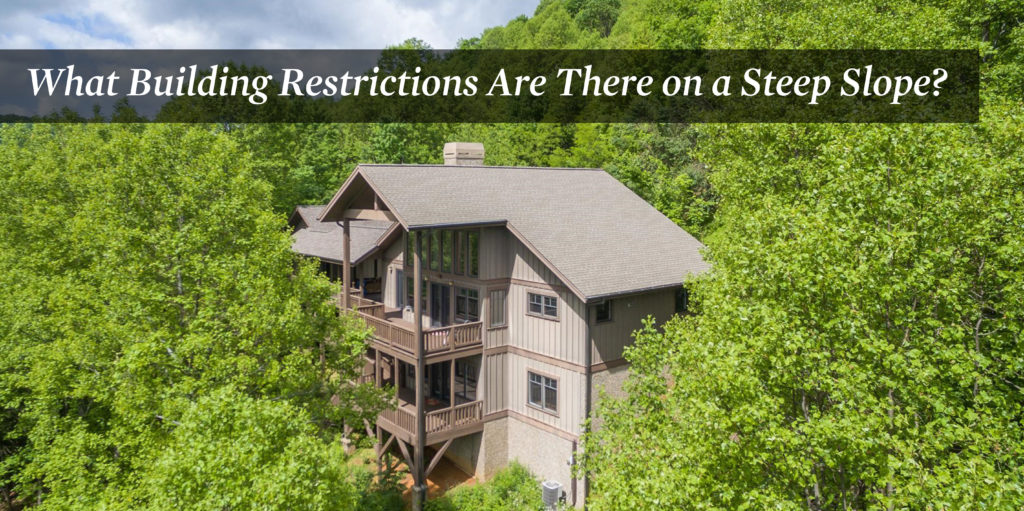

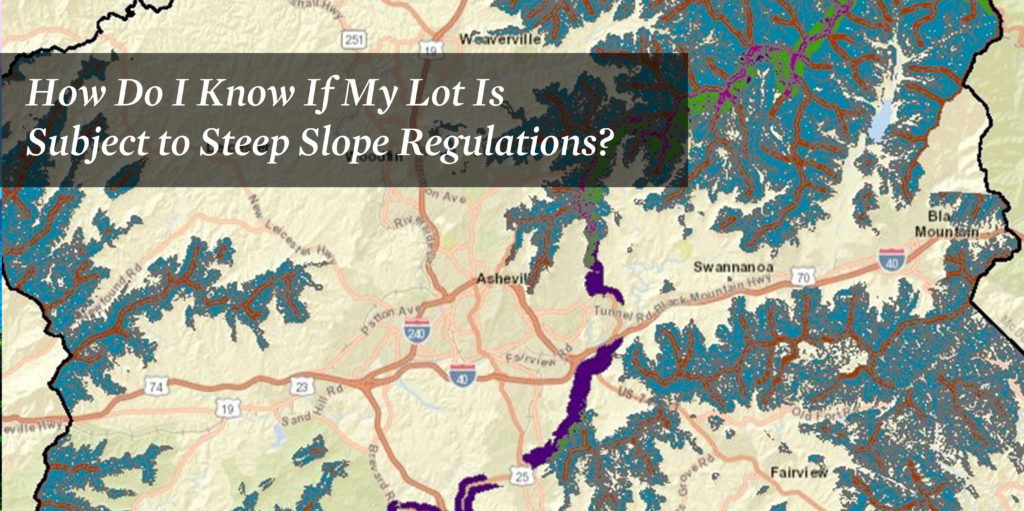
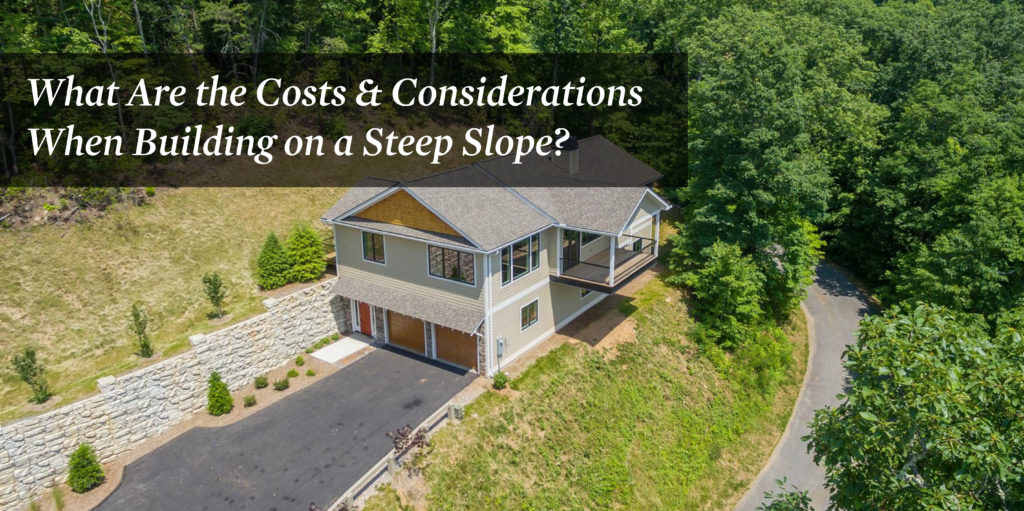
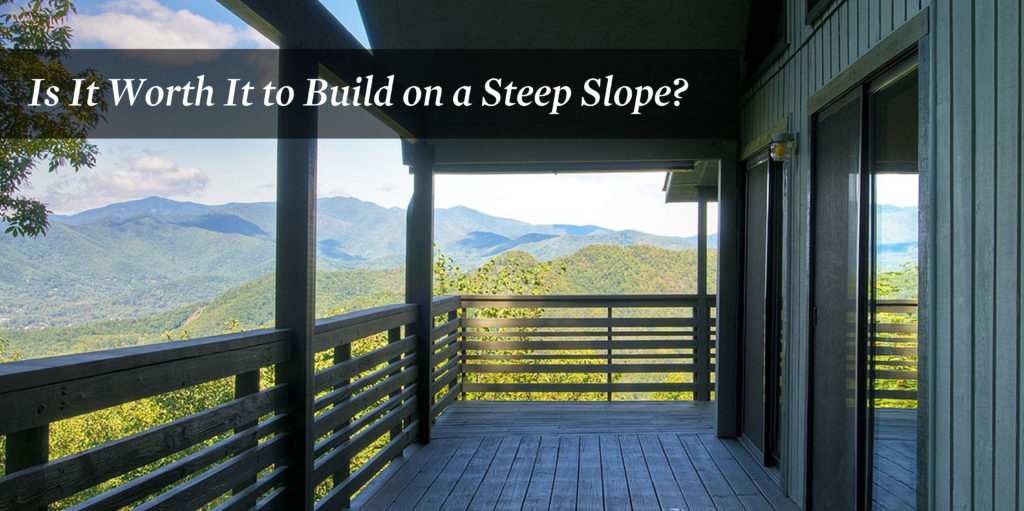




Leave a Reply